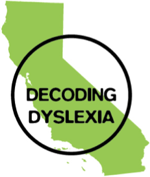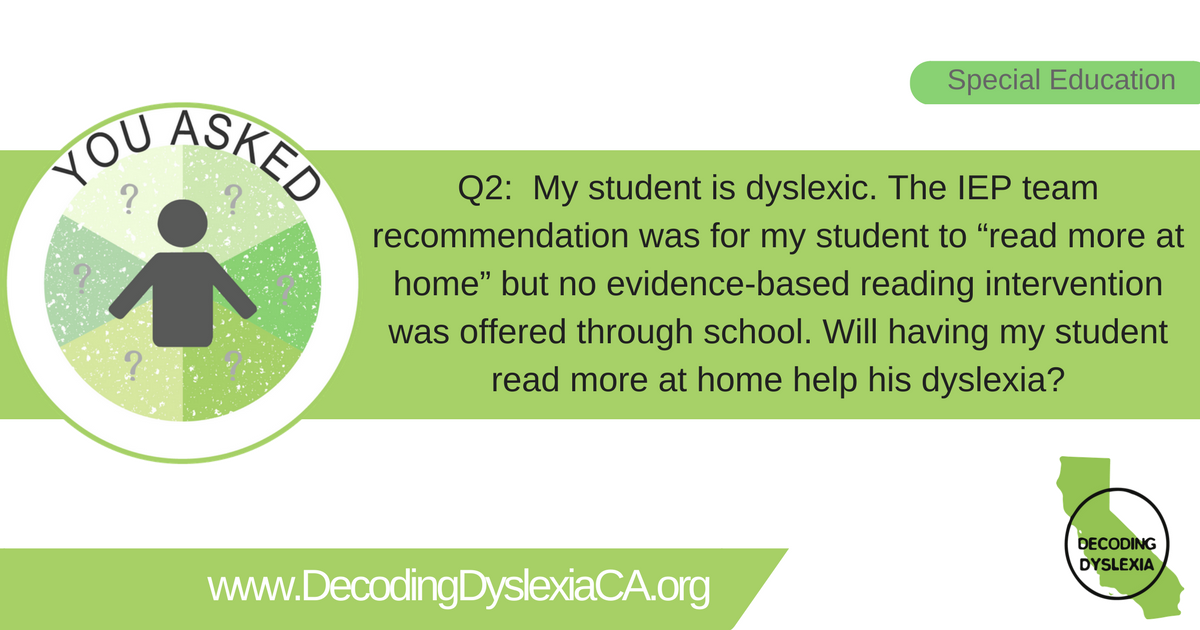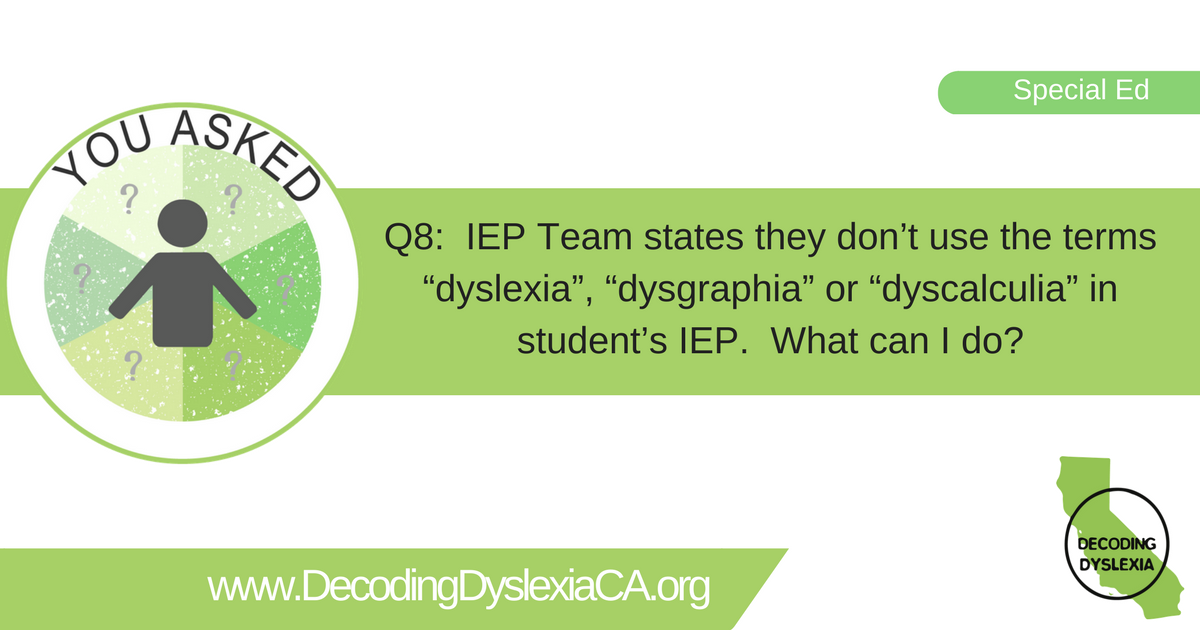Download a PDF version of this You Asked question and answer here.
Q2: My student is dyslexic. The IEP team recommendation was for my student to “read more at home” but no evidence-based reading intervention was offered through school. Will having my student read more at home help his dyslexia?
A: It depends on what areas your dyslexic child is struggling and what they are reading. For example, if your dyslexic child is struggling with phonemic awareness and decoding issues, they need to receive an evidence-based multisensory, direct, explicit, structured and sequential approach to reading intervention. Some reading interventions will have a student read “controlled text” passages. These passages would only include words for decoding skills the student is currently learning. “Controlled text” reading is helpful as it is closely aligned to the evidence-based reading intervention. Having your child do independent reading that is not aligned with their evidence-based program can cause added confusion for your child and may actually delay their reading progress. “Read more at home” will not teach a dyslexic child how to read.
It should be noted that reading out loud to your child (or providing access to audiobooks) at grade level (or above) is helpful as it exposes your child to grade level content and vocabulary that they would not be exposed to if they are unable to read at grade level.
For more YOU ASKED questions and answers click HERE


